Are you currently in the process of transitioning your hair? If so, you’re not alone! Many women embrace the natural hair movement, but the transition period can be challenging.
Finding the perfect protective style is crucial to maintain the health and growth of your hair during this time. In this article, we will unveil the ultimate protective style that will not only protect your transitioning hair but also help it thrive.
Transitioning hair requires extra care and attention as it undergoes a delicate transformation.
With our expert advice, you’ll discover the ideal protective style that suits your unique hair needs, whether it be braids, twists, weaves, or crochet styles.
We’ll discuss the pros and cons of each option, provide styling tips, and recommend the best products to maintain your transitioning hair’s health and vibrancy.
Don’t let the transition phase discourage you – embrace it. By choosing the right protective style, you’ll not only protect your hair but also unleash its full potential.
Get ready to show off your beautiful, thriving hair during this exciting journey.
Understanding Transitioning Hair
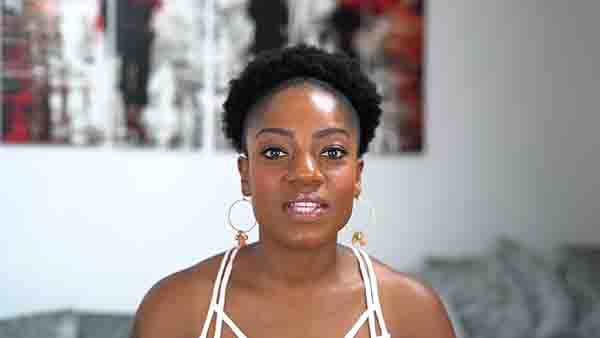
Transitioning hair requires extra care and attention as it undergoes a delicate transformation.
The process involves growing out your natural hair while still having some chemically treated hair remaining. This can lead to a combination of textures, making it essential to find a protective style that caters to both.
Protective styles offer a shield against damage, such as breakage and heat, while allowing your hair to breathe and grow.
They also help manage the two different textures and reduce styling time, making the transition phase more manageable.
During the transition, it’s important to understand your hair’s needs, as it may be more fragile and prone to breakage.
This is because the line of demarcation, where the natural and chemically treated hair meet, is the weakest point.
Protective styles can provide the necessary support and protection, ensuring your hair stays healthy and thriving throughout the transition period.
Dual Textures and Fragility: Understanding the Demarcation Line in Transitioning Hair
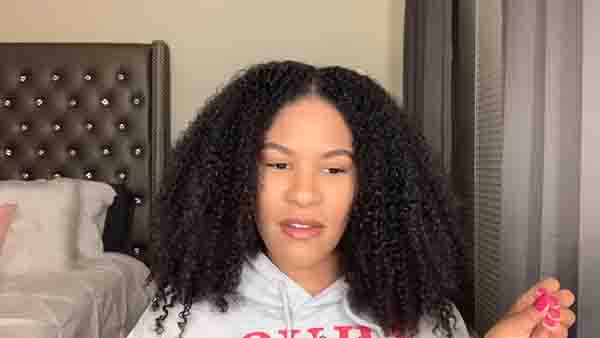
Transitioning hair is a unique and intricate journey that involves managing two distinct textures – the curly, natural hair and the straight, relaxed ends.
The point where these two textures meet is known as the demarcation line, and it holds the key to successful transitioning.
Hair demarcation lines are extremely delicate and vulnerable, so they need special care.
The understanding of this line’s significance is pivotal for those embarking on the path of transitioning, as it plays a crucial role in minimizing damage and fostering healthier hair growth.
Embracing the Natural Journey: Transitioning from Relaxed to Natural Hair
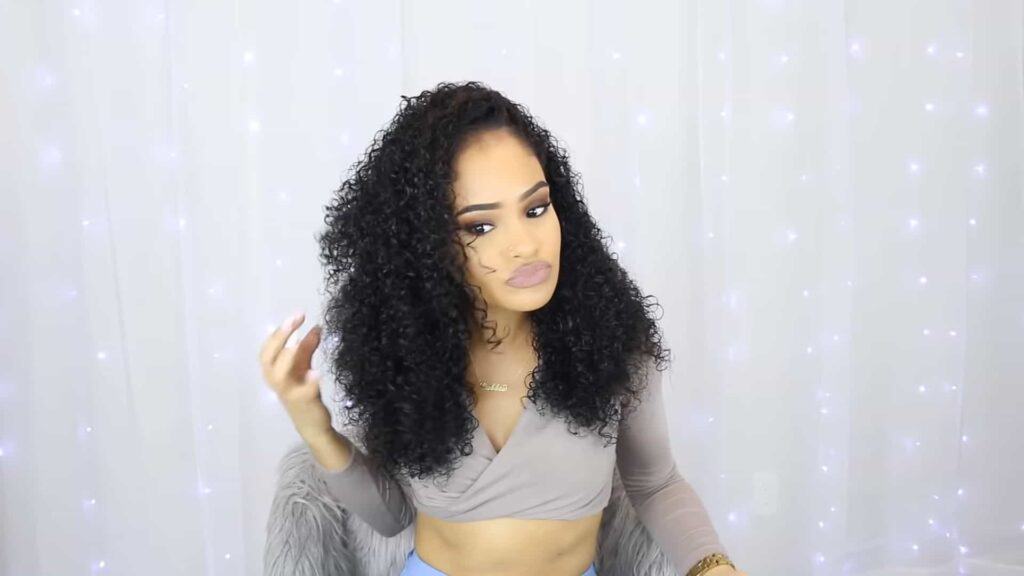
The decision to transition from chemically relaxed hair to embracing one’s natural texture marks a significant turning point.
It signifies a departure from the constant use of relaxers, heat styling tools, and straightening methods, which can cause damage and weaken the hair over time.
This transition process can involve different approaches, including gradual trims of relaxed ends or opting for a more dramatic chop to remove all chemically treated hair.
This journey is an opportunity to celebrate and embrace the diverse range of natural kinks, coils, and curls that define each individual’s unique hair pattern.
It’s a celebration of identity, self-acceptance, and the beauty of natural hair.
The Importance of Protective Styling for Transitioning Hair
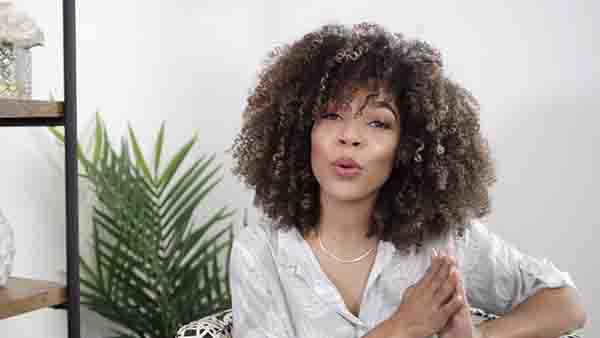
Protective styling is a key component of maintaining and nurturing transitioning hair.
As well as protecting your hair from environmental factors, these styles also minimize manipulation, which can lead to breakage. By keeping your hair protected, you allow it to grow without the risk of excessive damage.
One of the major benefits of protective styles is the reduced styling time they offer. When transitioning, managing two different textures can be time-consuming and frustrating.
It’s easy to keep protected styles looking good because they’re low-maintenance.
This gives your hair a much-needed break from daily styling, reducing the risk of damage and promoting healthier growth.
Protective styling stands as an essential pillar in the transition from chemically relaxed hair to natural hair goals. This process not only assists in reducing damage but also contributes to the overall health of the hair.
During transitioning, the demarcation line is particularly prone to breakage and damage due to the differences in texture and fragility.
Different Types of Protective Styles for Transitioning Hair
There are various protective styles to choose from, each offering its own unique benefits. Let’s explore some of the most popular options and discuss their pros and cons.
1. Braids
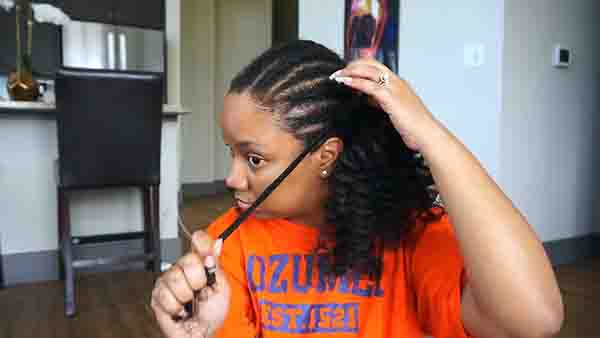
Braids are a classic protective style that has stood the test of time. They involve weaving your natural hair with extensions to create a versatile and long-lasting hairstyle.
Braids come in different sizes and lengths, allowing you to customize the style according to your preference.
They offer excellent protection for transitioning hair by keeping it tucked away and minimizing manipulation.
However, it’s important to note that braids can be heavy and may cause tension on your scalp if not installed properly.
It’s crucial to choose a skilled stylist who understands the importance of maintaining hair health while braiding.
Additionally, proper maintenance, such as regular moisturizing and cleansing of the scalp, is essential to prevent dryness and breakage.
2. Twists
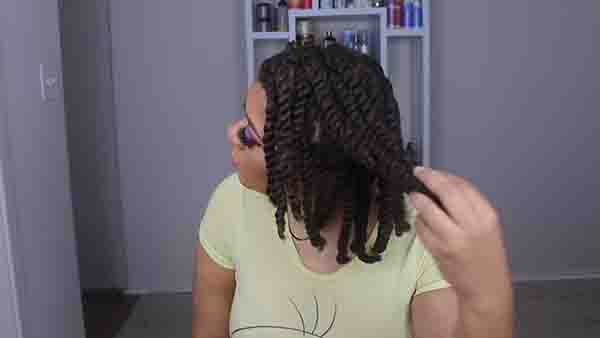
Twists are another popular protective style for transitioning hair. Similar to braids, twists involve intertwining your natural hair with extensions.
Twists offer a more defined and softer look compared to braids and can be worn in various sizes, from small twists to chunky twists.
They are known for their versatility and can be styled in different ways, allowing you to switch up your looks while keeping your hair protected.
One of the advantages of twists is their lightweight nature, which reduces the strain on your scalp.
They also provide excellent moisture retention, allowing your hair to thrive.
However, twists can be time-consuming to install, especially if you opt for smaller twists.
It’s important to set aside ample time for the installation process to ensure a neat and long-lasting result.
Regular maintenance, such as moisturizing and retwisting, will also be necessary to keep your twists looking fresh.
3. Weaves
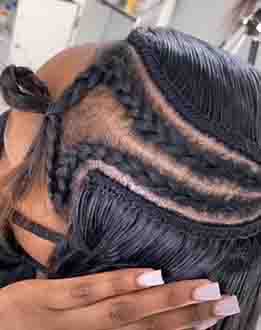
Weaves are a popular choice for those looking for a protective style that offers versatility and the ability to change hairstyles frequently.
Weaves involve sewing or gluing hair extensions onto a braided base, giving the appearance of natural hair.
This allows you to experiment with different lengths, textures, and colors without compromising the health of your transitioning hair.
Weaves provide excellent protection for your natural hair, as it remains concealed underneath the extensions.
They also allow for easy access to your scalp, making it possible to maintain a healthy regimen.
However, improper installation and excessive tension on the scalp can lead to hair damage and traction alopecia.
It’s crucial to choose a reputable stylist and follow proper maintenance practices to avoid these issues.
4. Crochet Styles
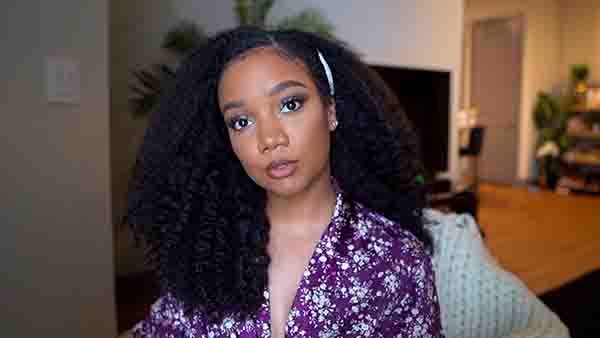
Crochet styles have gained popularity in recent years due to their versatility and natural appearance.
This protective style involves attaching hair extensions to your natural hair using a crochet needle.
The extensions are looped through your braided base, creating a seamless and natural look.
Crochet styles offer a wide range of options, including curly, straight, and braided looks.
One of the advantages of crochet styles is the quick installation process. They can be done in a fraction of the time compared to other protective styles, making them ideal for those with a busy lifestyle.
Crochet styles also allow for easy access to your scalp, enabling proper moisturization and care.
However, it’s important to avoid excessive tension and weight on your scalp, as this can lead to hair damage.
Regular maintenance, such as retightening loose extensions, is necessary to maintain the integrity of the style.
5. Cornrows as a Transitioning Hairstyle
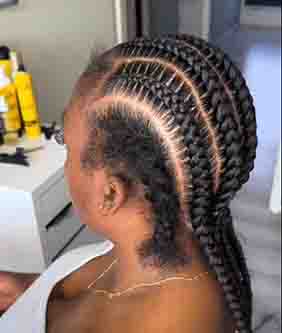
Cornrows stand as a versatile and protective hairstyle option for those transitioning to natural hair.
Not only do cornrows offer an opportunity to experiment with different looks, but they also provide the advantage of minimizing manipulation and tension on the hair.
By keeping the hair tucked away, cornrows safeguard the fragile demarcation line, reducing the risk of breakage and promoting healthy growth.
This style is adaptable, allowing individuals to switch between protective styles without causing undue stress on the hair.
6. Exploring Stylish Head Wrap and Scarf Options for Transitioning Hair

Incorporating head wraps or scarves into the transitioning hair journey adds both style and protection.
These accessories serve as versatile tools for creating stunning looks while safeguarding the hair from environmental factors that could lead to damage.
There are numerous creative ways to tie head wraps or scarves, making them an excellent option for those seeking to enhance the appearance of their transitioning hair.
From bold patterns to subtle elegance, these accessories provide a means of personal expression while caring for the hair.
7. Marley Twists: Effortless Style with Low-Tension Transitioning Hair
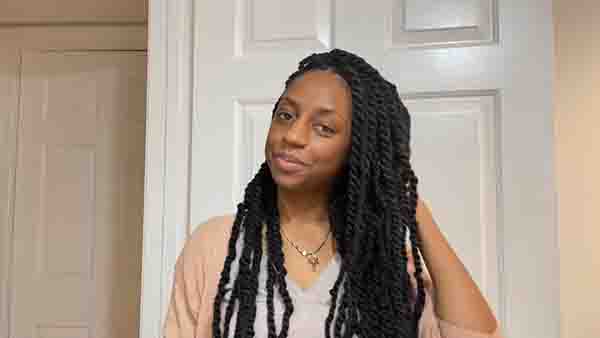
Marley Twists offer a stylish and low-tension option for individuals transitioning from relaxed to natural hair.
This hairstyle involves intertwining Marley braiding hair extensions with the natural and transitioning hair, resulting in a fun and carefree look.
The low-tension nature of Marley Twists ensures that the hair and scalp remain free from excessive stress, reducing the risk of damage or breakage.
With this style, individuals can confidently embrace their journey while enjoying a chic and trendy appearance.
8. Creating Blended Voluminous Curls: Flexi-Rod Sets for Transitioning Hair
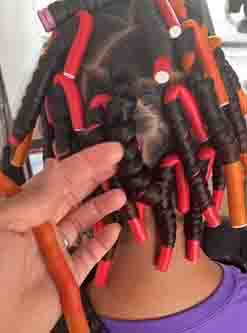
One of the challenges faced during the transition from relaxed to natural hair is achieving uniform and voluminous curls that seamlessly blend both textures.
Flexi-rod sets emerge as an effective solution to this concern. By wrapping the hair around flexi-rods, individuals can create well-defined curls that unite the natural and relaxed portions.
This technique not only produces stunning results but also serves as a protective style that can last up to a week.
The flexi-rod sets provide an excellent opportunity to experiment with different curl patterns while supporting healthy hair growth.
How to Choose the Right Protective Style for Your Hair Type

Choosing the right protective style for your hair type is essential to ensure optimal results. Here are some factors to consider when making your decision:
1. Hair Texture
Different protective styles work better for specific hair textures. For example, braids and twists are suitable for most hair types, while weaves and crochet styles may require a certain hair length or thickness.
2. Lifestyle:
Consider your lifestyle and the level of maintenance you can commit to. Some styles, like weaves, may require more frequent upkeep, while others, like braids, may be more low-maintenance.
3. Desired Look:
Think about the look you want to achieve with your protective style. If you prefer a more natural appearance, twists or crochet styles may be the best options. If you’re looking for versatility and the ability to change hairstyles frequently, weaves or crochet styles may be more suitable.
4. Scalp Sensitivity:
Take into account any scalp sensitivities or allergies you may have. Some protective styles, such as braids and weaves, involve the use of synthetic hair, which may cause discomfort or irritation for some individuals. Opt for natural hair or hypoallergenic options if necessary.
By considering these factors, you can narrow down your options and choose the protective style that best suits your hair type and lifestyle.
Adjusting Styling Routine During the Transition from Relaxed to Natural Hair
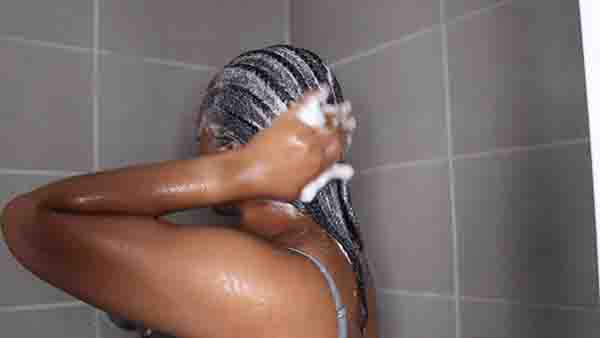
Transitioning hair demands a change in the typical styling routine. As new, natural hair growth emerges, it requires different care and attention than the relaxed ends.
Adapting to this change involves incorporating practices that cater to both textures. One essential adjustment is to avoid excessive heat styling, as heat can exacerbate the already fragile state of the demarcation line.
Gentle detangling techniques, deep conditioning, and protective styling play key roles in maintaining the overall health and appearance of transitioning hair.
Maintaining Sleekness and Hydration: Essential Transitioning Hair Care Products
Maintaining sleekness and hydration during the transition process is paramount. Hydrating transitioning hair products, including moisturizing shampoos, conditioners, leave-in treatments, and oils, play a pivotal role in nurturing the hair.
These products ensure that both the natural and relaxed portions of the hair receive the necessary hydration, enhancing shine, manageability, and overall health.
Regular use of these products helps mitigate the dryness and brittleness that often accompany the transition.
How to Properly Prepare Your Hair for a Protective Style
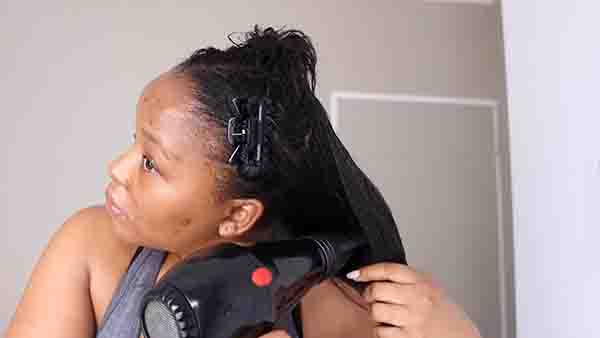
Properly preparing your hair before getting a protective style is crucial to ensure its success and longevity. Here are some steps to follow:
1. Deep Conditioning
Prior to installing your protective style, give your hair a deep conditioning treatment to moisturize and strengthen it. This will help minimize breakage and promote healthy growth.
2. Detangling
Gently detangle your hair to remove any knots or tangles. This will make the installation process easier and prevent unnecessary pulling and breakage.
3. Trim Split Ends
If your hair has split ends, it’s best to trim them before getting a protective style. This will prevent further damage and promote healthier growth.
4. Cleanse and Clarify
Wash your hair with a clarifying shampoo to remove any product buildup or residue. This will ensure a clean and healthy foundation for your protective style.
5. Moisturize
Apply a leave-in conditioner or moisturizer to hydrate your hair and scalp. This will help maintain moisture levels throughout the duration of your protective style.
By following these steps, you’ll create a healthy and optimal environment for your protective style, ensuring its success and longevity.
Maintaining and Caring for Your Protective Style
Proper maintenance and care are essential to keep your protective style looking fresh and your hair healthy. Here are some tips to help you maintain and care for your protective style:
1. Moisturize Regularly
Even though your hair is protected, it’s important to keep it moisturized. Use a lightweight leave-in conditioner or moisturizing spray to hydrate your hair and prevent dryness.
2. Cleanse Your Scalp
Depending on the style, it may be necessary to cleanse your scalp periodically. Use a diluted shampoo or cleansing spray to remove any buildup or residue.
3. Protect Your Edges
Pay special attention to your edges, as they are more susceptible to breakage. Apply a nourishing oil or edge control product to keep them moisturized and protected.
4. Avoid Overstyling
While it’s tempting to experiment with different hairstyles, excessive manipulation can lead to breakage. Limit the amount of restyling and opt for gentle styling techniques to minimize damage.
5. Cover Your Hair at Night
Use a satin or silk scarf or pillowcase when sleeping to prevent friction and breakage. This will help maintain your protective style and keep your hair healthy.
By following these maintenance tips, you’ll ensure that your protective style remains intact and your transitioning hair continues to thrive.
Tips for Promoting Healthy Hair Growth While in a Protective Style

Protective styles provide an excellent opportunity to promote healthy hair growth. Here are some tips to maximize growth while in a protective style:
1. Scalp Massages
Regularly massage your scalp to increase blood circulation and stimulate hair follicles. This can promote healthier and faster hair growth.
2. Deep Condition
Apply a deep conditioning treatment to your hair and scalp at least once a month. This will provide essential nutrients and moisture, promoting optimal growth.
3. Limit Heat Usage
Heat can cause damage to your hair, especially when it’s in a vulnerable state during the transition phase. Minimize the use of heat styling tools and opt for heatless styling techniques instead.
4. Maintain a Healthy Diet
Good nutrition plays a vital role in hair growth. Consume a balanced diet rich in vitamins, minerals, and proteins to support healthy hair growth from within.
5. Avoid Excessive Manipulation
While protective styles are meant to minimize manipulation, it’s important to avoid excessive pulling or tugging on your hair. Be gentle when styling or retouching your protective style to prevent breakage.
By implementing these tips, you’ll create an environment that fosters healthy hair growth while your hair is in a protective style.
Popular Protective Styles for Transitioning Hair
Now that we’ve discussed the importance of protective styling and how to care for your hair, let’s explore some popular protective styles for transitioning hair:
1. Box Braids
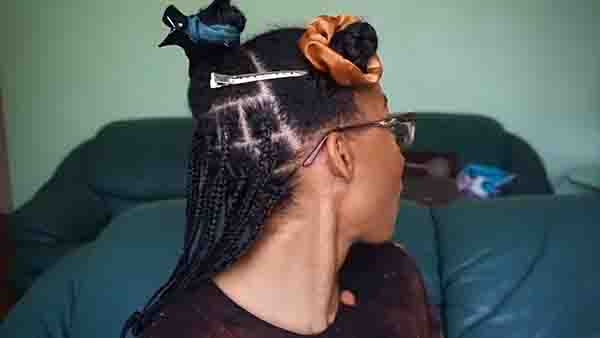
Box braids offer versatility and low maintenance, making them a popular choice for transitioning hair. They can be styled in various lengths and sizes, allowing you to customize your look.
2. Senegalese Twists
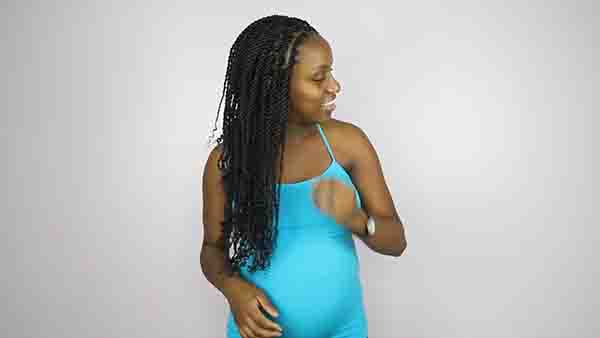
Senegalese twists are similar to box braids but offer a softer and more defined look. They are a great option for those looking for a more natural appearance.
3. Faux Locs
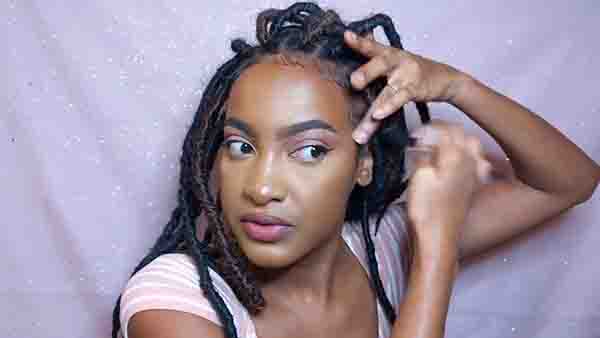
Faux locs provide a bohemian and trendy look while offering excellent protection for your transitioning hair. They can be installed using various methods, such as crochet or individual braiding.
4. Wigs
Wigs provide the ultimate versatility, allowing you to switch up your look without compromising the health of your hair. They are a great option for those who prefer temporary protective styles.
Remember, the best protective style for you will depend on your hair type, lifestyle, and personal preference. Consult with a professional stylist to determine the style that suits you best.
Common Mistakes to Avoid When Transitioning and Choosing a Protective Style
While transitioning your hair and choosing a protective style, it’s important to avoid common mistakes that can hinder your progress. Here are some pitfalls to watch out for:
1. Neglecting Moisture
Transitioning hair requires extra moisture due to its fragile nature. Neglecting to moisturize your hair can lead to dryness, breakage, and setbacks in your transition journey.
2. Tension and Tightness
Ensure that your protective style is not installed too tightly or with excessive tension. This can cause hair breakage, traction alopecia, and discomfort.
3. Neglecting Scalp Care
Your scalp is the foundation for healthy hair growth. Neglecting to cleanse and care for your scalp can lead to clogged hair follicles and hindered growth.
4. Using Harsh Chemicals
Avoid using harsh chemicals or products that can further damage your transitioning hair. Opt for natural and gentle products that promote hair health.
5. Not Consulting a Professional
Transitioning hair requires expert guidance. Consulting with a professional stylist who understands the needs of transitioning hair is crucial for a successful transition and protective style.
By avoiding these common mistakes, you’ll set yourself up for a smooth and successful transition journey.
FAQ
Transitioning hair can experience breakage due to the contrasting textures.
Trim every 3-4 months to gradually remove relaxed ends.
Focus on proper moisture and care to maintain hair health.
Use deep conditioning treatments to soften and manage new growth.
Moisturize and detangle gently to prevent breakage.
The choice depends on your preference for hair texture and maintenance.
Use water-based leave-in conditioners and oils to keep hair moisturized.
Some shedding is normal during the transitioning process.
Wash as needed, typically every 1-2 weeks, to maintain scalp health.
Use sulfate-free shampoos, deep conditioners, and moisturizers suitable for both textures.
Yes, braids can protect transitioning hair and help manage two textures.
Wrap braids with a silk or satin scarf to prevent friction.
Braiding can be a protective style that promotes healthier hair.
Box braids can be safe for transitioning hair if done gently.
Regular deep conditioning and moisturizing maintain softness.
Gradually trim relaxed ends, keep hair moisturized, and avoid harsh styles.
Yes, but use heat protectants and low heat settings to prevent damage.
Trim every few months to manage the relaxed ends.
Maintain moisture, minimize heat, and avoid tight styles.
Breakage and improper care can hinder growth during transitioning.
Styles like twists or braids can protect dyed transitioning hair.
Silk press with caution to prevent damage to the two textures.
Gradually trim relaxed ends while caring for both textures.
Keep hair moisturized and use gentle styling techniques.
Shea butter-based or water-based products work well for moisture.
Air drying or using low-heat methods like a hooded dryer are best.
Protective styles can promote growth over several weeks to months.
Protective styles can be kept for 6-8 weeks over locs with proper care.
Conclusion
Embracing Your Hair Journey and Finding the Perfect Protective Style
Transitioning your hair can be an exciting and transformative journey. Embrace this period of growth and discovery as you embark on the path to natural, healthy hair.
Finding the perfect protective style is essential to maintain the health and growth of your transitioning hair. Consider your hair type, lifestyle, and personal preferences when choosing the right style for you.
By understanding the unique needs of transitioning hair and following proper maintenance and care, you’ll ensure that your protective style not only protects your hair but also helps it thrive.
Remember to moisturize regularly, cleanse your scalp, and avoid excessive manipulation. With the right protective style and proper care, your transitioning hair will flourish and reveal its true beauty.
Embrace your hair journey with confidence and unleash the full potential of your beautiful, thriving hair.
Transitioning is a process of self-discovery and empowerment, and the perfect protective style will be your ally every step of the way.
So go ahead, rock your protective style and showcase the beauty of your transitioning hair to the world.
